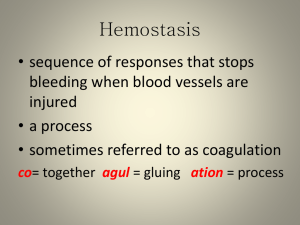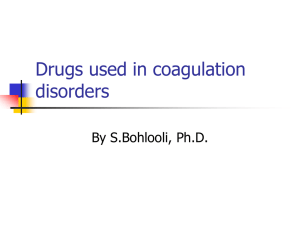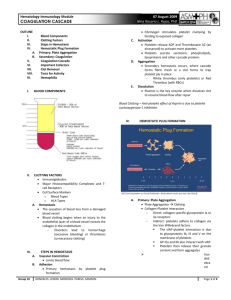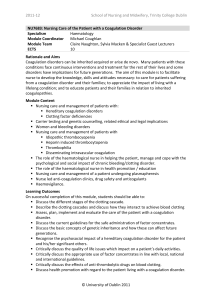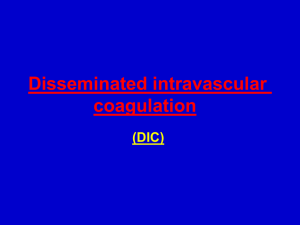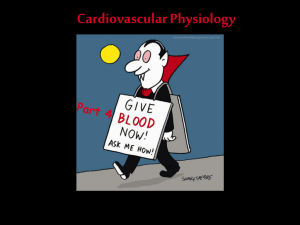Q5 Outline the mechanism of action of drugs used
advertisement
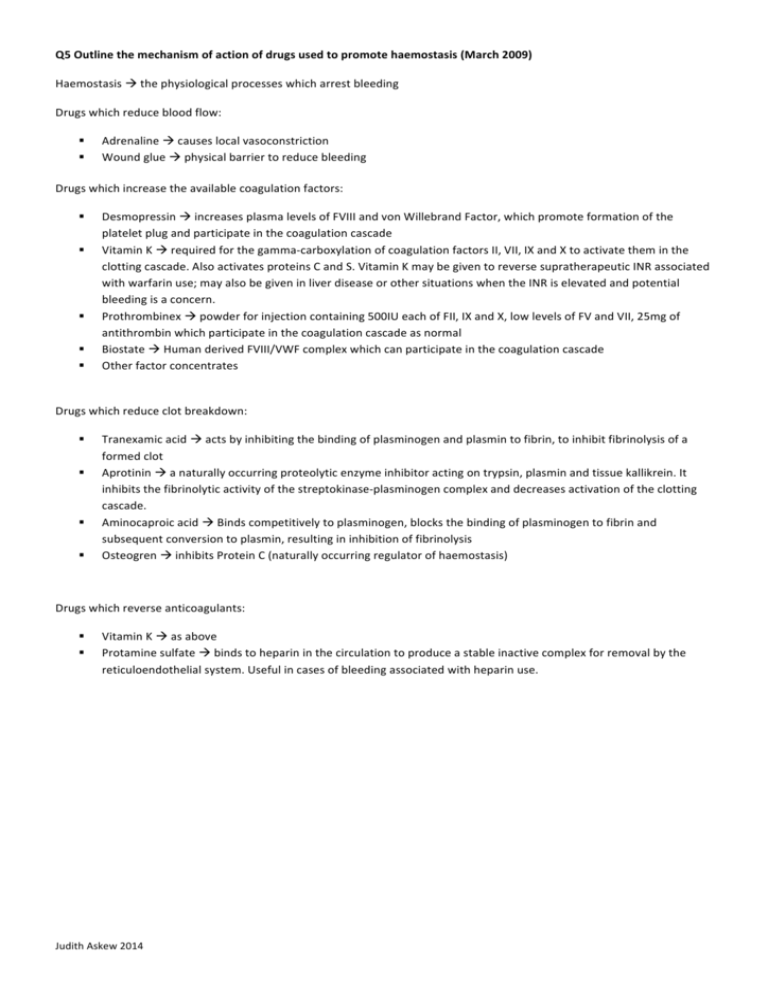
Q5 Outline the mechanism of action of drugs used to promote haemostasis (March 2009) Haemostasis à the physiological processes which arrest bleeding Drugs which reduce blood flow: § § Adrenaline à causes local vasoconstriction Wound glue à physical barrier to reduce bleeding Drugs which increase the available coagulation factors: § § § § § Desmopressin à increases plasma levels of FVIII and von Willebrand Factor, which promote formation of the platelet plug and participate in the coagulation cascade Vitamin K à required for the gamma-­‐carboxylation of coagulation factors II, VII, IX and X to activate them in the clotting cascade. Also activates proteins C and S. Vitamin K may be given to reverse supratherapeutic INR associated with warfarin use; may also be given in liver disease or other situations when the INR is elevated and potential bleeding is a concern. Prothrombinex à powder for injection containing 500IU each of FII, IX and X, low levels of FV and VII, 25mg of antithrombin which participate in the coagulation cascade as normal Biostate à Human derived FVIII/VWF complex which can participate in the coagulation cascade Other factor concentrates Drugs which reduce clot breakdown: § § § § Tranexamic acid à acts by inhibiting the binding of plasminogen and plasmin to fibrin, to inhibit fibrinolysis of a formed clot Aprotinin à a naturally occurring proteolytic enzyme inhibitor acting on trypsin, plasmin and tissue kallikrein. It inhibits the fibrinolytic activity of the streptokinase-­‐plasminogen complex and decreases activation of the clotting cascade. Aminocaproic acid à Binds competitively to plasminogen, blocks the binding of plasminogen to fibrin and subsequent conversion to plasmin, resulting in inhibition of fibrinolysis Osteogren à inhibits Protein C (naturally occurring regulator of haemostasis) Drugs which reverse anticoagulants: § § Vitamin K à as above Protamine sulfate à binds to heparin in the circulation to produce a stable inactive complex for removal by the reticuloendothelial system. Useful in cases of bleeding associated with heparin use. Judith Askew 2014
